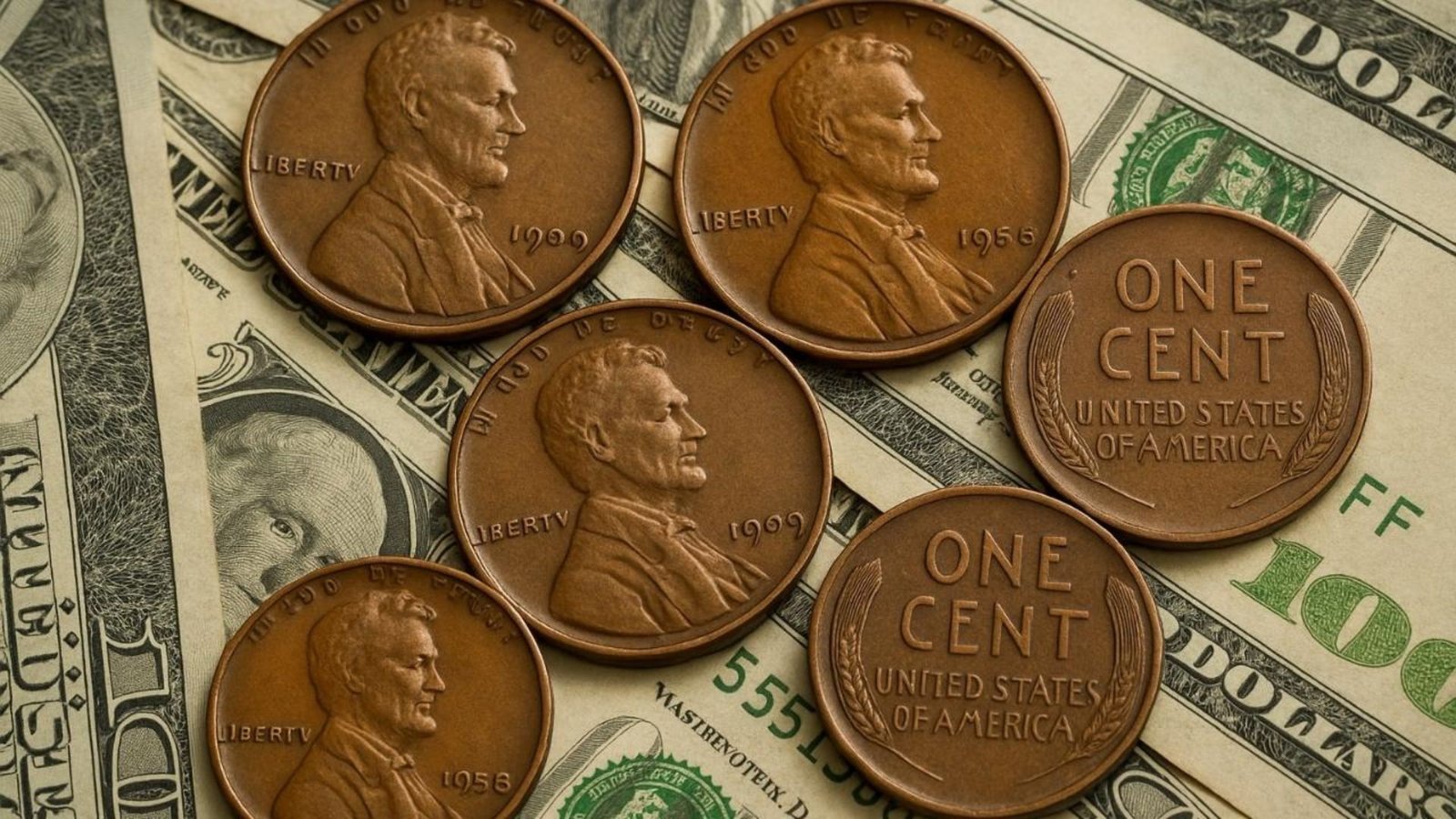Every wheat penny holds a tiny piece of American history. These small copper coins, minted from 1909 to 1958, feature Abraham Lincoln on the front and two wheat stalks on the back. Collectors love them—not just for nostalgia, but because some have exploded in value over the past decade. If you have a jar of old pennies, one might be worth hundreds or even thousands today!
In this guide, we’ll break down how wheat penny values changed from 2015 to 2025. You’ll learn which dates and conditions matter most, see real auction prices, and get simple tips to check your own coins. Let’s dig in.
Why Wheat Pennies Are Special
The U.S. Mint made wheat pennies for 50 years to honor Lincoln’s 100th birthday. Designer Victor David Brenner created the iconic wheat-ear reverse. Over 20 billion were struck, but rare errors and low-mintage years make certain ones priceless.
Fun fact: The 1909-S VDB (the designer’s initials on the first batch) sold for $1.7 million in 2019—up from $600,000 in 2010!
How Wheat Penny Values Changed (2015–2025)
Prices depend on three things:
- Year & Mint Mark (Philadelphia, Denver, or San Francisco)
- Condition (from “Good” to “Mint State 70”)
- Rarity (errors or low production)
Here’s a clear table of average auction prices for key dates in Fine (light wear) and MS65 (gem uncirculated) grades.
| Year & Mint | 2015 Fine | 2015 MS65 | 2025 Fine | 2025 MS65 | % Increase |
|---|---|---|---|---|---|
| 1909-S VDB | $650 | $3,200 | $1,100 | $5,800 | +81% |
| 1909-S | $180 | $1,100 | $320 | $1,950 | +77% |
| 1914-D | $160 | $2,400 | $280 | $4,100 | +71% |
| 1922 No D | $450 | $12,000 | $850 | $22,000 | +83% |
| 1931-S | $55 | $320 | $110 | $580 | +81% |
| 1955 DDO | $800 | $1,800 | $1,300 | $2,900 | +61% |
Data from PCGS Price Guide and Heritage Auctions (2025). Prices are averages; top examples sell higher.
Top Gainers in the Last 10 Years
1922 No D – The “Holy Grail” Error
A die break hid the Denver mint mark on some 1922 pennies. Only about 50,000 exist. In 2016, an MS65 sold for $18,000. By 2025, the same grade hit $22,000—a 22% jump in nine years!
1955 Double Die Obverse (DDO)
Lincoln’s face looks blurry because the die shifted. A 2018 MS65 example fetched $2,100. In 2024, one graded MS66 sold for $3,500. That’s a 67% rise in six years.
1909-S VDB – The Classic Rarity
Only 484,000 were made. Fine examples doubled from $650 in 2015 to $1,100 in 2025. Gem coins? From $3,200 to $5,800.
What Drives Wheat Penny Prices Up?
- Grading Services – Coins certified by PCGS or NGC sell for 2–3x more.
- Market Demand – New collectors entered during 2020–2022, pushing prices.
- Low Supply – High-grade coins are melting away in attics.
- Inflation – Copper value rose 40% since 2015.
How to Check Your Wheat Pennies (Step-by-Step)
- Grab a Magnifying Glass – Look for mint marks under the date (S = San Francisco, D = Denver, none = Philadelphia).
- Check Key Dates – Focus on 1909-S, 1914-D, 1922 No D, 1931-S, 1955 DDO.
- Examine Condition – No scratches, original red color = higher value.
- Use Free Apps – PCGS CoinFacts or NGC Coin Explorer show live prices.
- Get It Graded – Spend $20–$40 to certify; it can 10x your coin’s value.
Where to Sell Your Wheat Pennies
- Local Coin Shops – Quick cash, but lower offers.
- Online Marketplaces – eBay or GreatCollections (use “Buy It Now” for speed).
- Auction Houses – Heritage or Stack’s Bowers for rare coins over $1,000.
Pro tip: Never clean your coins—polishing removes value!
Final Thoughts: Start Hunting Today
The value of wheat pennies in the last 10 years proves one thing—old change can become serious money. A 1922 No D that was $12,000 in 2015 now tops $22,000. Even common dates in perfect shape gained 30–50%.
Check your piggy banks, grandma’s jar, or that forgotten cigar box. One wheat penny could fund a vacation. Happy hunting!




